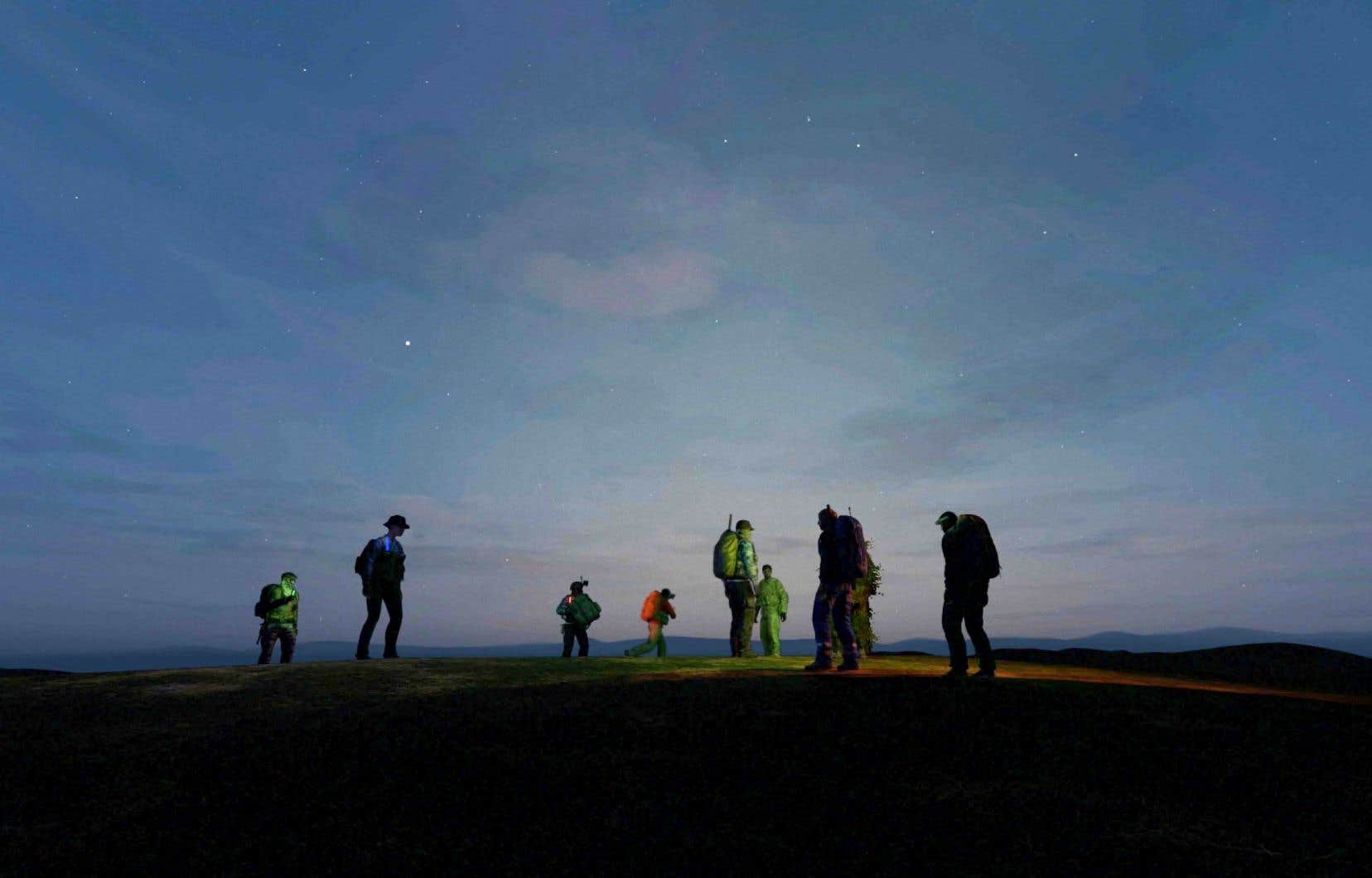Not only do filmmakers have more and more technological tools at their disposal to tell their stories, they can also, with the help of these tools, push the limits of their art and redefine our relationship with reality. This is how we see more experimental proposals emerging at the Montreal International Documentary Meetings (RIDM) this week, integrating artificial intelligence or video games.
In Notes from Eremocene, the third opus of a trilogy on our relationship with technology, presented Sunday and Friday at the festival, Slovakian Viera Čákanyová addresses the loneliness inherent in our era of hyperconnectivity. The form of her documentary essay is completely unusual: digital and analog images are associated with a discussion between the filmmaker’s post-human avatar with a generative artificial intelligence.
The film Knit’s Island, presented Tuesday and Thursday and produced by three French documentary filmmakers, follows a group of Internet users within a virtual universe taken from a video game. Almost no shots are filmed in the real world, but the filmmakers interact with real human beings behind their screens. They also exploit the full potential of poetic evocation of their virtual images, navigating between landscapes of great beauty and more intimate scenes.
“For a long time, we have been trying to promote more creative, even radical, approaches to documentary,” says Hubert Sabino-Brunette, co-artistic director and programmer at the festival. In the current context of technological development, we necessarily present more and more films which reflect on our use of technologies, or on the notion of copyright, because certain documentaries are made up of images found on digital platforms . »
Artificial intelligence
The question of copyright inevitably arises, at a time when industry players fear being replaced by artificial intelligence. But rather than representing a loss of artist agency due to AI, Viera Čákanyová reappropriates this technology, subverts it, and integrates it into her film as in a collage, to reflect on the place of digital tools in our era.
“The film becomes an essay on the future of humanity and the climate crisis,” observes Hubert Sabino-Brunette. What’s more, the filmmaker chats in English with the AI. “The question of language disappears. As if we shared a common language, but forgot each other at the same time. Viera Čákanyová represents the dystopian world into which we are falling: the Eremocene, or the age of solitude. » This new era would be located after the Anthropocene, which many still consider to be our current era, characterized by the influence of human beings on the Earth’s ecosystems.
“In cinema, technology is often used to evoke a dystopian world, a world which “was”, but which has become a place of perdition, precisely because of the technologies represented, explains Jean-Charles Ray, lecturer in cinema at the University of Montreal and specialist in the relationship between cinema and video games. This was done a lot in the 1980s and 1990s, and we see this type of approach [revenir en force] Today. »
Video games
While video games have always borrowed from cinema, for staging and narrative, cinema is at the same time absorbing more and more video game influences, assert MM. Sabino-Brunette and Ray. “Filmmakers have been inspired by video games since the 1990s, with films like The Lawnmower Man (Brett Leonard, 1992), then Old Boy (Park Chan-wook, 2003), in the 2000s.”
Such an approach can also turn out to be subversive or political, like the use of AI by Viera Čákanyová, but it sometimes remains limited, says Jean-Charles Ray. He cites as an example a series of photographs by Pavel Vesnakov. This artist creates images by integrating real lighting and photographic composition techniques with video game screenshots. “The works are very interesting, but the artist himself admitted that he lacked the essence of photography, the punctum, that is to say the moment to which we cannot return. »
If the film Knit’s Island, presented at the RIDM, is also made up of scenes captured in a game, but it is more touching, since it represents authentic human interactions in a virtual universe, according to Hubert Sabino-Brunette. “It’s a great way to address all kinds of social issues that affect players in the real world, like their romantic relationships and the impact of the pandemic on their lives […] while everything is created within the game. It’s a real lesson in cinema, through processes that the filmmakers had to learn to master. […] This shows that new technologies can improve cinematic language. »
